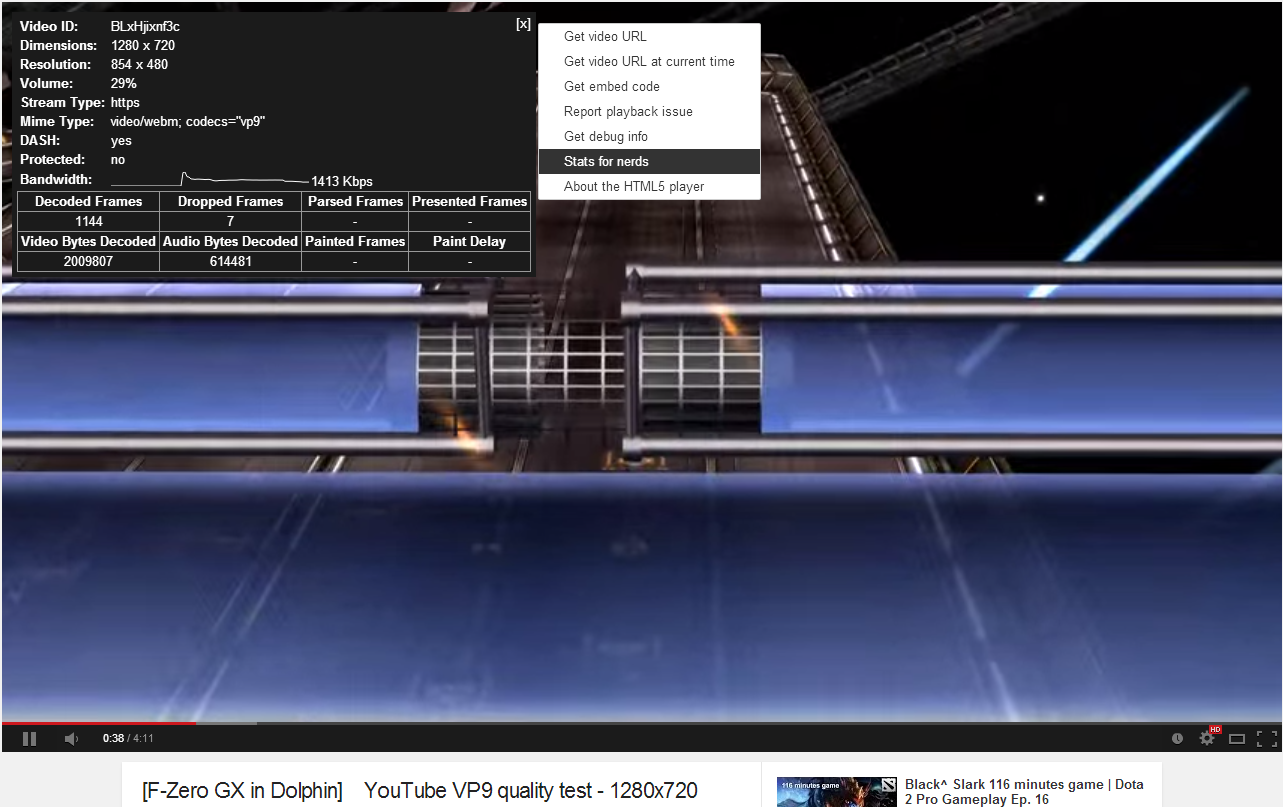ScepticMatt
Member
What happened to YouTube before?
You may have noticed that since around a year ago, youtube videos look like crap (you may remember this neogaf thread)
The reason is the introduction of the new dynamic adaptive streaming (DASH) formats.
The new formats have drastically lowered the video bitrate (720p: form 2-3 to 1-1.5 1080p: from 3-5.9 to 2-3 MBit/s)
What is happening to Youtube now?
Google has quietly begun to use VP9 as default encode for new popular videos
VP9 is a more efficient codec. The bandwidth used is similar for 720p, and 50% higher for 1080p+.
Here is a 720p F-Zero GX comparison done by Doom9/overclocker forum member Nintendo Maniac 64:
Yellowstone 4k video: https://www.youtube.com/watch?v=Y-Pa8yYXews
In Chrome/Opera, you can right click the video to find out if it uses vp9:
downsize if old
You may have noticed that since around a year ago, youtube videos look like crap (you may remember this neogaf thread)
The reason is the introduction of the new dynamic adaptive streaming (DASH) formats.
The new formats have drastically lowered the video bitrate (720p: form 2-3 to 1-1.5 1080p: from 3-5.9 to 2-3 MBit/s)
What is happening to Youtube now?
Google has quietly begun to use VP9 as default encode for new popular videos
VP9 is a more efficient codec. The bandwidth used is similar for 720p, and 50% higher for 1080p+.
Here is a 720p F-Zero GX comparison done by Doom9/overclocker forum member Nintendo Maniac 64:
F-Zero GX video: https://www.youtube.com/watch?v=BLxHjixnf3c
Yellowstone 4k video: https://www.youtube.com/watch?v=Y-Pa8yYXews
In Chrome/Opera, you can right click the video to find out if it uses vp9:
Source: [1] [2]
downsize if old





